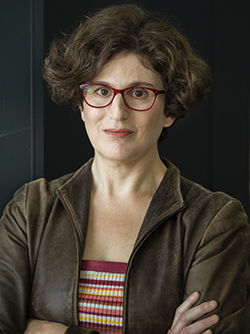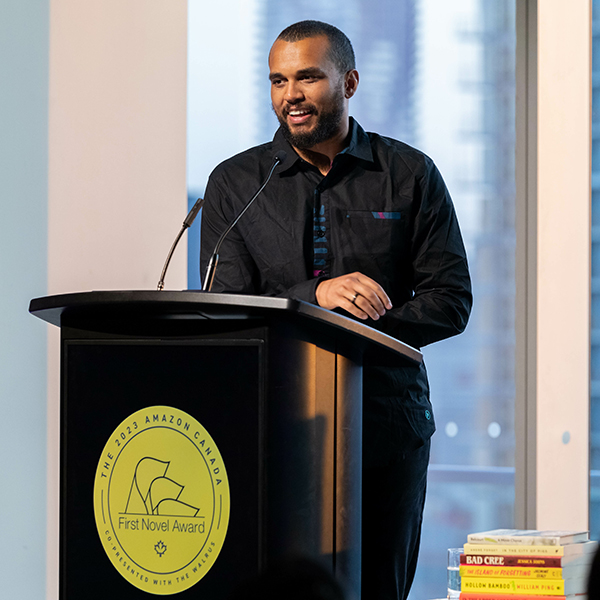Growing up in Ottawa in the early nineties, Sarah Weinman, BSc’00, was surrounded by stories of young women and girls who had gone missing.
First, Melinda Sheppit was murdered in her hometown in 1990. Then there was the death of Sophie Filion in 1993. Around the same time, Kristen French disappeared in St. Catharine’s, Ontario. The body of Leslie Mahaffy was found near St. Catharine’s soon after.
“There was this real sense of fear in Eastern and Central Ontario. I really felt that as a young teenager,” Weinman says. She followed along closely as Paul Bernardo and Karla Homolka were convicted for the killings of French and Mahaffy. (Sheppit and Filion’s murders both remain unsolved.)
For Weinman, these early cases marked the beginning of a lifelong fascination with true crime. An award-winning writer and journalist, she has spent her career exploring the stories of victims and perpetrators, while considering the complex reverberations of violent acts. Much of Weinman’s non-fiction work delves into little-known stories from the mid-20th century, often blending criminal investigation with cultural criticism.

Her book The Real Lolita: The Kidnapping of Sally Horner and the Novel that Scandalized the World (2018) builds a persuasive case for how the real-life kidnapping of an 11-year-old girl in 1948 likely inspired Vladimir Nabokov’s celebrated and controversial novel. Weinman has also edited three anthologies: Unspeakable Acts: True Tales of Crime, Murder, Deceit and Obsession (2020), Women Crime Writers: Eight Suspense Novels of the 1940s & 50s (2015) and Troubled Daughters, Twisted Wives (2013).
Her path to becoming a leading expert on crime writing was unconventional. After completing an undergraduate degree in biology at McGill, she went on to study forensic science at the John Jay College of Criminal Justice in New York City.
In grad school, she interned with the investigations department of the New York Office of the Chief Medical Examiner. She observed autopsies daily, and occasionally visited crime scenes where medical legal investigators were conducting their initial work. She absorbed it all, she says: “I really felt like I was quite a sponge that summer.”
Weinman was also becoming a devoted reader of contemporary crime fiction. Her interests weren’t shared by most people she knew, so she immersed herself in online forums and communities. She worked a weekend shift at a beloved mystery bookshop in New York City called Partners & Crime, where she was paid in books and introduced to a lively literary community.
After grad school, she launched her popular literary blog “Confessions of an Idiosyncratic Mind.” She soon began reviewing books for major newspapers and became a crime fiction columnist for the Baltimore Sun.
Over the past two decades, Weinman has become a leading creator, critic and curator of crime culture. She’s written for New York Magazine, Vanity Fair, and The Washington Post. She has been a National Magazine Award finalist for her reporting, and a winner of the Arthur Ellis Award for Excellence in Crime Writing for The Real Lolita.
In addition to her reporting, Weinman writes the “Crime Lady” newsletter and moonlights as a short fiction writer (one of her short stories is in the running for a prize from the Crime Writers of Canada). Earlier this year, her career came full circle when she took on the prestigious role of crime columnist for The New York Times Book Review.
Without question, crime—and true crime in particular—is having a moment. Weinman attributes the recent wave of interest in the genre to the unprecedented success of Sarah Koenig’s 2014 podcast Serial. “[It] really opened things up from a commercial and critical standpoint for the genre, and for people who never would have thought of themselves as consumers of true crime to be interested in it,” she says.
Since Serial, countless true crime podcasts and TV shows have turned into sensations: from Making a Murderer to S-Town to I’ll Be Gone in the Dark to Murder Among the Mormons.
Weinman points out that the public’s fascination with crime is far from new. Still, she says one notable change—beyond the sheer amount of storytelling happening—is the interactive element of true crime fandom. Fans used to be satisfied with simply learning about cases; now, they want to help solve them.
And some amateur investigators have, in fact, moved cold cases forward. The popular podcast In Your Own Backyard, for instance, likely spurred new leads in the 1996 disappearance of California college student Kristin Smart.
Of course, amateur sleuths’ unprecedented involvement in cases can also pose problems. Untrained people don’t always approach the subject at hand with the necessary care, respect and humility. When working with people who have experienced immeasurable loss, or who are dealing with the aftermath of trauma, Weinman says it’s crucial to “try to come in with as much empathy as possible, challenge your biases, and question your assumptions, always.”
These considerations feel all the more pressing in light of last summer’s Black Lives Matter protests. As conversations about defunding the police and prison abolition move into the mainstream, true crime is facing a reckoning.
Historically, primarily white creators have returned to the same tired tropes: the dead white girl, the heroic detective, the mastermind serial killer. Too often, the genre has failed to account for who the justice system disproportionately fails and punishes, or to present nuanced understandings of the determinants of crime and criminality.
That’s starting to change, Weinman says—the genre is beginning to challenge what she calls the “true crime industrial complex.” Creators are no longer solely centering stories about detective work by brave cops, or accepting what police say as the final word. Instead, they’re focusing on the perspectives of victims and their loved ones, examining systemic issues, and reporting on marginalized and underrepresented communities.
Weinman, for her part, is at work on her new book. Slated for publication in 2022, it’s called Scoundrel: How a Convicted Murderer Persuaded the Women Who Loved Him, the Conservative Establishment, and the Courts to Set Him Free.
“Crime has always valued individuals, but really the story is about systemic issues,” Weinman says. “It doesn’t mean that we’ll stop being interested in individual stories. We like to read about people who do extraordinary things and, for better or for worse, murder is an extraordinary act because you cross the line from someone being alive and someone not being alive. But I think looking at those extraordinary individual cases in the context of larger systemic issues—that to me is the future of true crime.”


